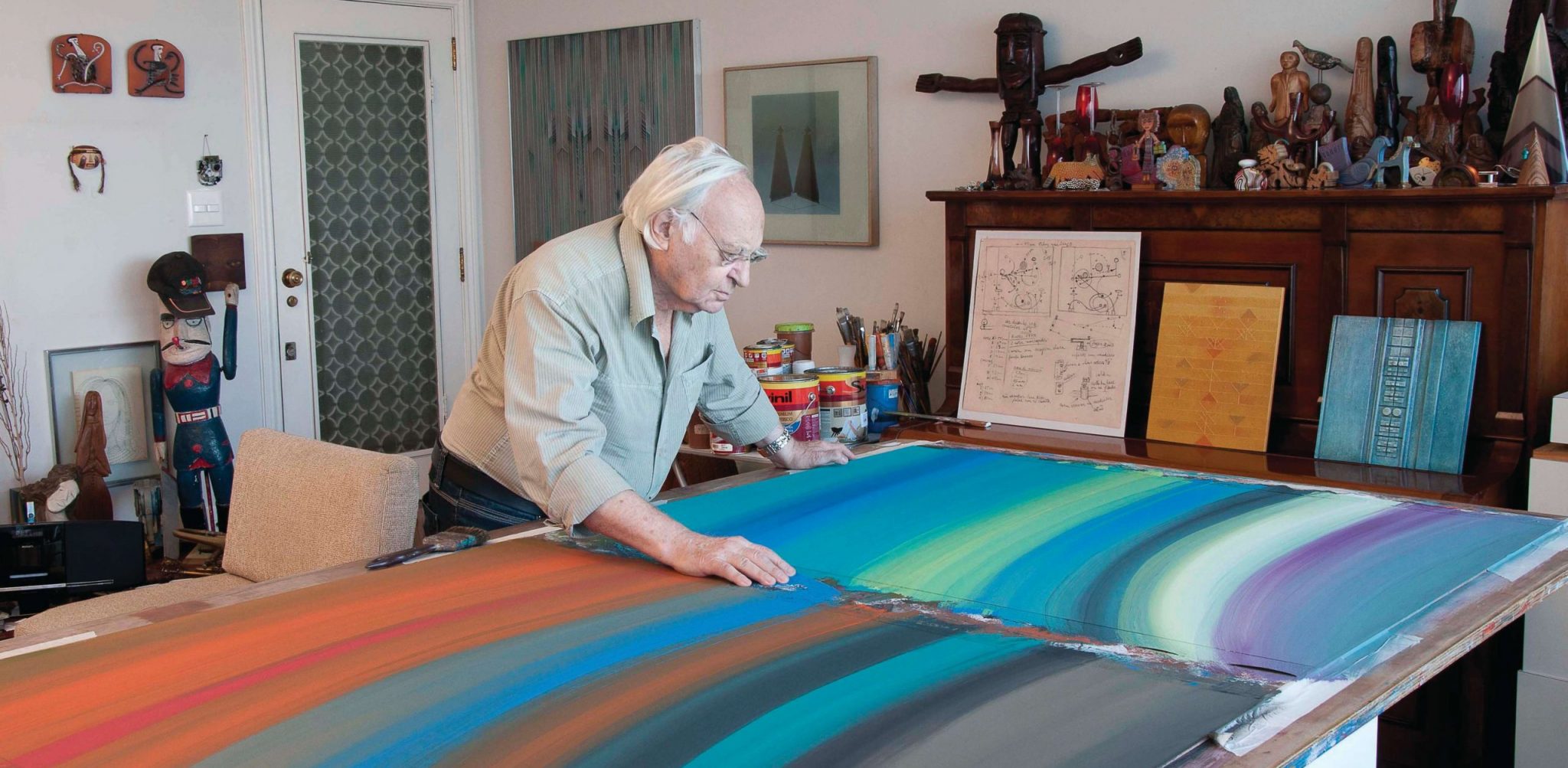Abraham Palatnik, a pioneer of kinetic art, has died. The Brazilian artist first came to prominence when his work Aparelho Cinecromático (Kinechromatic Device, 1949) was included in the 1st Bienal de São Paulo in 1951. Featuring 600 metres of electric wires linking 101 lamps of various voltages, together with several coloured cylinders rotating at varying speeds, the multimedia installation was deemed ineligable for the grand prize as it did not fit any existing art categories. The bienal’s international jury however bestowed Palatnik’s contribution with an honourable mention and critic Mário Pedrosa estimated it to be ‘the true art of the future.’
Palatnik would go on to experiment with a wide variety of media. From 1962 he took to wood carving, creating a series of reliefs in which parallel undulating lines were chipped out of the material. This new body of work, Palatnik said, came of his belief the artist should ‘discipline the chaos regarding information’, going on to use a similar patterning in later, large-scale, paintings.
The wall-hung series did not mark a rejection of his interest in installation however. In 1964, Palatnik began to work on his Objetos cinéticos, sculptures constructed of metallic rods or wires bearing geometrically shaped wooden plaques at their ends which are moved slowly by motors and, in some cases, by electromagnets.
Writing of Palatnik’s 1965 solo show at the Saint Gallen Museum, in Swizertland, the critic Juergen Morschel noted the artist ‘does not execute objects, but rather stages events’. It was a radical approach that saw the sculptor become associated with some of Brazil’s most important artistic movements, including Grupo Ruptura (São Paulo, 1952) and Grupo Frente (Rio de Janeiro, 1954), Concretism (1956) and Neo-Concretism (1969) and included in several more iterations of the Bienal de São Paulo (1953, 1955, 1959, 1961, 1965–1969), as well as the Venice (1964), Cordoba (1966), and Mercosul (1997, 2005) biennials. The artist also featured in various international exhibitions which were key to establishing kinetic art as a movement, including Mouvement 2 at Denise René gallery, in Paris; Lumière, Mouvement et Optique, at the Brussels Palace of Fine Arts, in 1965; Kunst-Licht-Kunst, at the Eindhoven Art Museum, and Kinetic Art, at the San Francisco Museum of Art, in 1966; Lights in Orbit, at the Howard Wise Gallery, New York, 1967; Arte Programatta e Cinética, at the Pallazo Reale, Milan in 1983.
Born to Ukrainian Jewish immigrants in Natal, Rio Grande do Norte, the artist spent most of his professional life working in Rio de Janeiro. According to O Globo, Palatnik, who had preexisting health conditions, contracted the new coronavirus.
